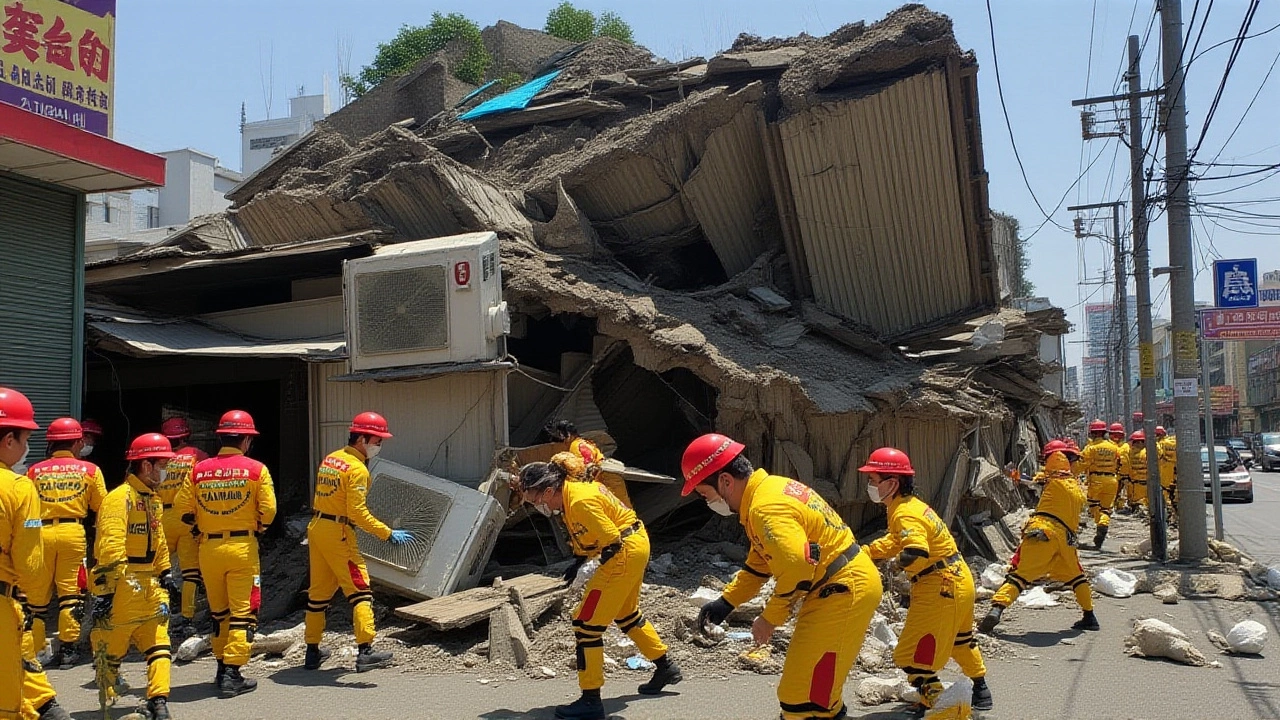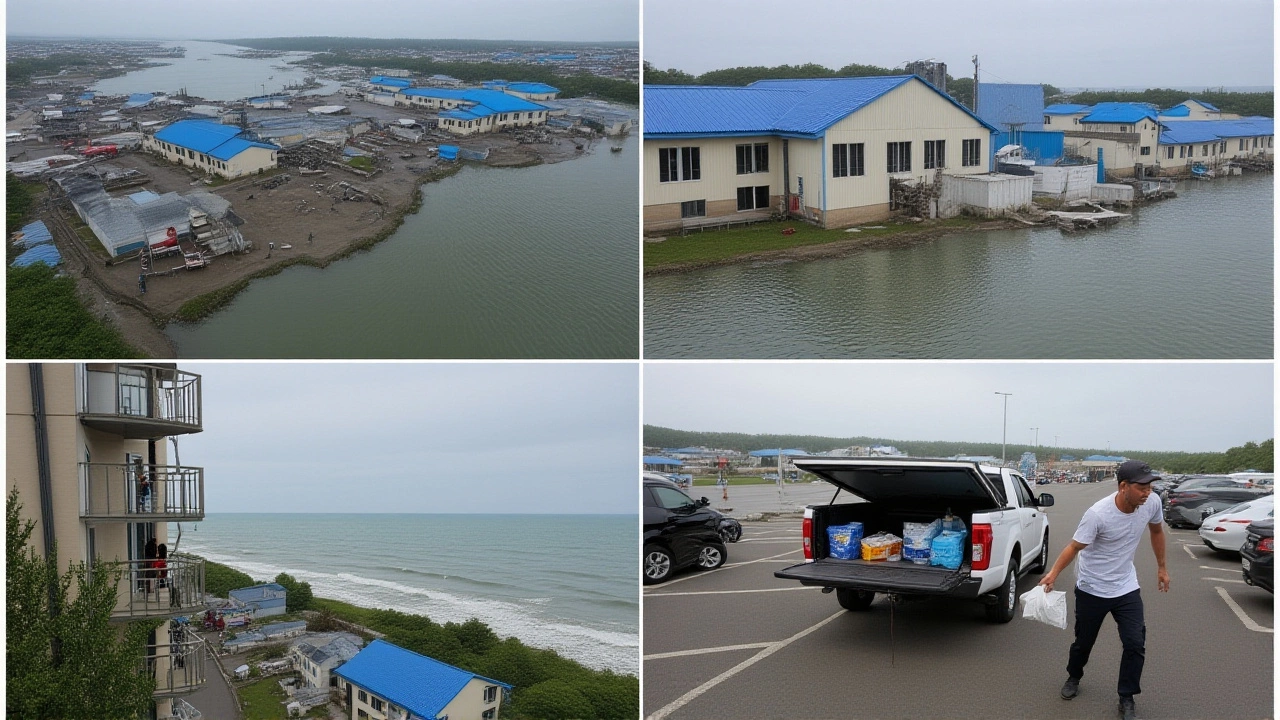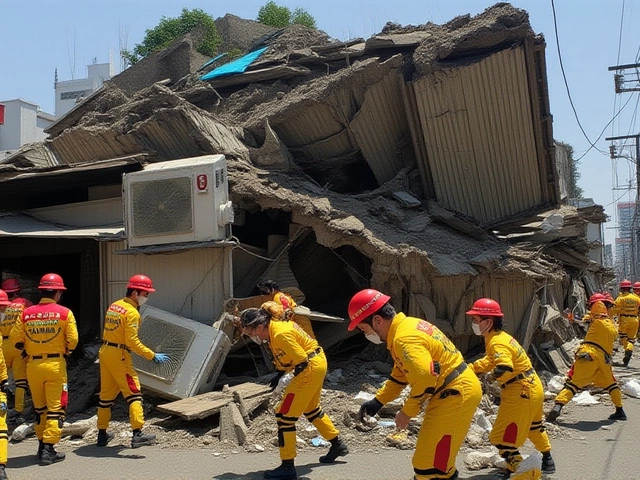1
7.4‑Magnitude Quake Kills 18, Injures 1,100 in Taiwan

At 07:58:11 local time on April 3, 2024, a earthquake measuring 7.4 on the Richter scale shattered the calm of eastern Taiwan. The tremor originated about 15 km south of Hualien City, at a shallow depth of roughly 35 km. The U.S. Geological Survey recorded the magnitude at 7.4, while Taiwan’s own Central Weather Bureau reported a slightly lower 7.2. In the wake of the disaster, Hsu Chen-wei, magistrate of Hualien County, ordered an immediate evacuation of all structures deemed unsafe. The National Airborne Service Corps deployed helicopters within hours, rescuing dozens of people trapped in collapsed buildings.
Background and Historic Context
Taiwan sits on the Pacific Ring of Fire, a belt of intense seismic activity that has produced several major quakes in the island’s modern history. The last event of comparable size was the 7.6‑magnitude Jiji (Chi‑Chi) earthquake on September 21, 1999, which claimed more than 2,400 lives and left a deep scar on the national psyche. Since then, the government has invested heavily in early‑warning systems, stricter building codes, and public education campaigns. Those measures proved their worth this time, limiting the death toll to 18 despite the quake’s ferocity.
The April 3 Shock: What Happened
The ground rolled across a swath of Taiwan that stretches from the east coast to the interior mountains. Residents in Taipei, about 100 miles north‑west of the epicenter, reported windows rattling and picture frames falling. Even the bustling financial district of Shanghai, roughly 500 miles away, felt a faint tremor. After the initial rupture, more than 700 aftershocks rattled the island in the first 24 hours, with the strongest after‑shock registering 6.0 on April 4.
Power outages affected roughly 87,000 households in Hualien, but the rest of the island remained lit thanks to redundant grid designs. Eight power plants in the region were temporarily shut down as a precaution, and officials ordered a halt to all construction projects until safety inspections could be completed.
Casualties rose quickly as rescuers combed through rubble. Initial reports of seven dead and 700 missing gave way to the confirmed figure of 18 fatalities, more than 1,100 injured, and two people still unaccounted for as of early May. Hospitals in Yilan and Taitung counties were placed on standby by the Ministry of Health, and field medical teams set up triage stations near the most damaged neighborhoods.
Rescue and Recovery Operations
Beyond the National Airborne Service Corps, a coalition of military engineers, local volunteers, and international NGOs swarmed the disaster zone. The Taiwanese Ministry of National Defense dispatched two engineer battalions equipped with cutting‑edge low‑orbit satellite communication kits – marking the first time such technology was used in a domestic emergency.
In the rugged cliffs of Taroko National Park, search dogs led by Chen Chi-mai, mayor of Kaohsiung, uncovered a pocket of hikers trapped after a rockfall. The teamwork between civilian rescue units and the park’s rangers exemplified the island’s coordinated response.
Helicopters from the Airborne Service Corps lifted 82 stranded individuals, including a group of miners trapped in a collapsed shaft outside Hualien. Supplies such as bottled water, blankets, and portable generators were air‑dropped to isolated villages until ground crews could reach them.
Infrastructure and Economic Impact
Transportation arteries were hit hardest during the morning rush hour. The Taiwan High‑Speed Rail halted service between Taipei and Hualien for several hours while engineers inspected tracks for potential landslides. Metro lines on the west side of the island, including the New Taipei Circular Line, suffered minor damage; service on the Banqiao‑Zhonghe segment remained suspended until April 7.
In response, the Ministry of Transportation and Communications set up a temporary ferry link between Su’ao Port in Yilan County and the Port of Hualien on April 4. Airlines such as Mandarin Airlines and UNI Air added seven extra daily flights to Hualien Airport, helping to move relief personnel and essential goods.
The quake also dealt a blow to tourism, a vital sector for the eastern coast. Visitor numbers to Hualien dropped by an estimated 200,000 in the month following the disaster, prompting the Tourism Bureau to launch a subsidy program offering discounts of up to NT$2,000 for travelers who booked accommodation in the affected counties.
Across the island, 848 structures were reported damaged, ranging from residential homes in New Taipei to commercial buildings in Taoyuan. Roads winding through the Central Mountain Range were intermittently blocked by landslides, but no major highways remained impassable for longer than 48 hours.
Looking Ahead: Lessons and Future Preparedness
Experts say the quake underscores the importance of continuous upgrades to building standards, especially for older structures that predate the 2003 code revisions. Dr. Liu Hsiang‑ming, a seismologist at National Taiwan University, warned that the frequency of magnitude‑7‑plus events could increase as tectonic stress accumulates along the Philippine Sea Plate boundary.
In the political arena, local officials faced scrutiny over the speed of evacuations. While Hsu Chen-wei’s swift order to empty unsafe buildings earned praise, residents in remote villages claimed they received alerts later than urban areas. The Central Weather Bureau announced plans to expand its mobile‑alert network to cover the remaining 5 % of the population currently reliant on radio broadcasts.
International observers noted Taiwan’s effective use of low‑orbit satellites for emergency communications, a technology that could become a model for other disaster‑prone nations. The government has pledged additional funding for the next generation of satellite‑linked rescue drones, aiming to cut response times by half.
As the island begins to rebuild, the collective memory of the 1999 quake serves as both a warning and a catalyst for innovation. The coming months will test the resilience of communities still reeling from loss, but the coordinated response so far offers a hopeful glimpse of how Taiwan can turn tragedy into stronger preparedness.

Frequently Asked Questions
How did the early‑warning system affect casualties?
Taiwan’s early‑warning alerts, issued by the Central Weather Bureau seconds before shaking began, gave residents crucial seconds to take cover. While the system couldn’t prevent structural failures, it reduced panic and likely saved lives, especially in high‑rise buildings where people could brace before the strongest motion hit.
What were the main challenges faced by rescue teams?
Rescuers contended with aftershocks that threatened to destabilize already‑damaged structures, limited road access due to landslides, and communication blackouts in remote villages. The deployment of low‑orbit satellites helped bridge the gap, allowing teams to coordinate via handheld devices even when cell towers were down.
How significant was the economic impact on tourism?
Tourism to Hualien fell by roughly 200,000 visitors in the month after the quake, translating to an estimated NT$3.5 billion loss in revenue. The government’s subsidy program, which offers discounts on hotels and attractions, aims to restore visitor confidence and recoup some of the shortfall by year‑end.
What steps are being taken to improve building safety?
Authorities are revisiting the 2003 seismic code, focusing on retrofitting older apartment blocks and schools. Incentive grants are being offered to property owners who install base‑isolators or reinforce load‑bearing walls, with a target to upgrade 15 % of vulnerable structures by 2027.







